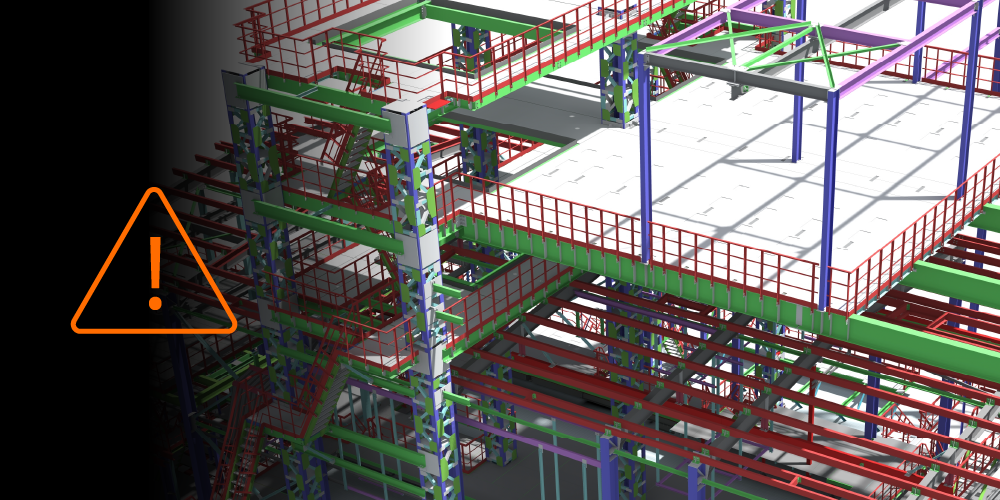Related Articles
— 6 min read
Gross Internal Area (GIA) and its Importance in Construction
Last Updated Oct 30, 2025
Samantha Nemeny
30 articles
Sam—Samantha if she’s feeling particularly academic—has spent a decade in content marketing, with eight years focused on Australia’s construction industry. She has a knack for making complex ideas easy to understand, turning industry jargon into clear, engaging stories. With a background in SEO and marketing, she’s spent the past three years at Procore, helping industry professionals navigate the world of construction with content that’s both insightful and easy to digest.
Last Updated Oct 30, 2025

‘Quiet but critical’ — if you asked construction professionals how they’ve come to understand the measurement of a metric known as gross internal area (GIA), that’s likely what they would say.
And that’s because it may seem to be ‘just a number’, but it plays a significant role:
- In commercial projects, lease values, sale prices, and ROI models are calculated based on GIA.
- In residential developments, it underpins ‘yield’, another metric that measures the ratio of saleable or lettable area to total site cost.
- For estimators, it drives cost per square metre benchmarks, which inform everything from tendering to feasibility.
From design and delivery processes to legal and contractual requirements, accurate GIA values can trigger a range of issues, including mismatches between design documentation and built reality, valuation disputes, and non-compliance risks.
That’s why GIA deserves more attention than it often gets. This article unpacks how it works, why it matters, and what construction professionals can do to ensure accuracy and alignment — so that every square metre counted contributes to the project’s success, not its risk.
Table of contents
What is Gross Internal Area
Gross Internal Area (GIA) is the total floor area measured to the internal face of a building’s external walls. It covers all enclosed floor space across every level of a building.
GIA provides a consistent benchmark for assessing building size in design, cost control, and valuation. In Australian commercial construction, it underpins:
- Quantity surveying and estimating: Forms the basis of cost per square metre calculations and material takeoffs
- Design documentation: Ensures compliance with National Construction Code (NCC) requirements and local planning rules
How Gross Internal Area is Measured
GIA is measured floor by floor to the internal face of external walls, capturing all enclosed spaces with precision. Expressed in square metres, it provides a consistent unit for design, cost control, and valuation across property types.
Inclusions
- Structural elements, such as internal walls, partitions, columns, and chimney breasts
- Circulation areas, including stairs, lifts, corridors, lobbies, and entrance halls
- All accessible levels, such as basements, mezzanines, and attics, with permanent access
- Service areas, including plant rooms, storage rooms, bathrooms, and mechanical spacesExclusions
- External wall thickness
- Open features, such as balconies, patios, terraces, and verandas
- External elements, including fire escapes, external stairs, and canopies
- Detached ancillary structures, such as garages, sheds, or greenhouses
- Voids without flooring, including atria and double-height lobbies
Why Gross Internal Area Is Critical for Construction Projects
A 2024 study from Yannakou et al. on the challenges facing the Australian construction industry found that cost blowouts and compliance failures are frequently tied to errors in measurement and documentation.
Because Gross Internal Area (GIA) serves as the baseline for design, cost, and valuation, even so-called ‘minor’ inaccuracies can lead directly to blown budgets, compliance failures, and reduced asset value.
Its influence extends beyond measurement, shaping every financial and operational outcome on a project.
Design and Planning
Accurate GIA defines the capacity and constraints that guide architectural and engineering decisions. It supports space efficiency analysis and circulation design across basements, floors, and service areas.
During design, it ensures feasibility by aligning spatial requirements with structural systems and building services.Cost Estimation and Financial Control
GIA is the foundation for calculating cost-per-square-metre in budgeting and tenders. Under fixed-price contracts, errors erode profit margins, making precision essential for financial certainty.
Reliable measurement also underpins contingency planning and Work in Progress reporting, allowing project teams to track financial performance with confidence.Valuation and Commercial Impact
Surveyors and valuers rely on GIA as a consistent unit for benchmarking property size and market value. Miscalculations can distort yield analysis, asset pricing, and financing decisions, resulting in downstream impacts that reduce the return on investment and weaken project viability.
Compliance and Risk Mitigation
GIA informs National Construction Code (NCC) compliance on egress capacity, occupancy limits, amenities, and safety requirements.
A precise baseline reduces disputes by strengthening scope definition and change management. It also supports WHS planning by linking floor area to emergency exits, fire suppression, and other safety provisions critical to regulatory approval.
How to Costly Errors When Calculating GIA
Errors in Gross Internal Area (GIA) calculations may seem simple, but at scale they destroy margins, create compliance failures, and fuel disputes.
These mistakes often arise when teams apply inconsistent definitions, overlook structural features, or fail to update figures as designs evolve. Senior leaders must enforce rigorous standards to ensure consistency in measurement and reliability of financial reporting.
Clarify Measurement Standards
Confusion between different floor area metrics is one of the most common sources of error.
When the wrong standard is applied, the result is inflated costs, distorted valuations, and compliance risks that cascade through the project lifecycle.
GIA is measured to the internal face of external walls. Gross Floor Area uses the external face, overstating size and inflating cost per square metre benchmarks. Net Internal Area is intended for leasing, and applying it in construction budgets distorts valuations, yields, and financial reporting.
Leaders should insist on clear identification of the metric applied in every tender, valuation, and contract.
Capture Structural and Circulation Features
Errors also occur when structural or circulation elements are excluded from calculations. Columns, partitions, and service shafts may be treated as non-usable space, while stairs, lifts, and lobbies are sometimes overlooked.
These omissions understate building size, skew efficiency ratios, and risk non-compliance with planning benchmarks. A consistent methodology must ensure every structural and circulation element is measured and recorded.
Apply Exclusions With Discipline
Another common pitfall is inconsistent treatment of exclusions.
External wall thickness, unenclosed balconies, external stairs, and detached outbuildings are sometimes included in error, overstating usable space and distorting cost benchmarks. Voids such as atria and double-height lobbies can also be miscounted.
Pro Tip
Treat every square metre as auditable data. Lock measurement rules into your BIM or cost platform so updates flow automatically through budgets, tenders, and valuations.
Manage Irregular Spaces With Care
Complex or irregular spaces are particularly vulnerable to miscalculation. Low headroom, sloped roofs, and mezzanines create uncertainty in measurement, and inconsistent treatment can inflate the reported area.
Keep Financial Data Current
Even where GIA is measured correctly, outdated figures undermine financial control.
Design revisions that alter the area are often not reflected in budgets, tenders, or work-in-progress reporting. This creates mispriced tenders, flawed reporting, and margin erosion.
Measurements must be updated after every revision, with teams validating changes before budgets are approved or reports are presented to boards.
Centralise Measurement With Digital Tools
Fragmented data caused by different stakeholders working from separate drawings or spreadsheets produces conflicting GIA figures across contracts and valuations.
Building Information Modelling (BIM) and cloud-based cost management platforms eliminate this risk by centralising data and linking geometry directly to cost information. Leaders should mandate a single source of truth to ensure accuracy and accountability.
Embed GIA in Change Management
Finally, measurement often breaks down when scope changes are handled informally.
Variations in area may be noted in design updates, but are often not captured in contracts, creating disputes and unaccounted-for cost impacts. GIA must be treated as the contractual baseline for scope, with every change triggering a formal variation order that documents cost and schedule implications. Without this discipline, financial control is quickly lost.
Accurate gross internal area calculations safeguard profitability and compliance
GIA anchors cost, compliance, and valuation accuracy across every stage of a project. Treating it as a governance metric (and not a design afterthought) protects margins, reduces disputes, and preserves asset value.
Categories:
Written by
Samantha Nemeny
30 articles
Sam—Samantha if she’s feeling particularly academic—has spent a decade in content marketing, with eight years focused on Australia’s construction industry. She has a knack for making complex ideas easy to understand, turning industry jargon into clear, engaging stories. With a background in SEO and marketing, she’s spent the past three years at Procore, helping industry professionals navigate the world of construction with content that’s both insightful and easy to digest.
View profileExplore more helpful resources

Managing Direct Costs in Construction: How Visibility Drives Profitability
Direct costs define the financial reality of every construction project. They cover the labour, materials, and equipment that drive delivery and determine profitability. But even the best-planned budgets can shift...

BIM Clash Detection: Reducing Rework, Delays, and Risk in Construction
Design clashes can be a significant hidden cost in construction, as each conflict between systems risks expensive rework, project delays, and reduced margins. BIM clash detection empowers teams to identify...

Next-Gen Job-Costing: Ready to Move? 5 Things to Consider Before You Get Started
In this three-part series, Quantity Surveyor turned Financial Solutions Specialist Clint Burgess uncovers the real-world gains for people, processes, and profits when businesses move from legacy to next-generation Enterprise Resource...

From Workarounds to Workflow: Solving Construction’s Legacy Job-Costing System Challenges with Next-Gen Tools
In this three-part series, Quantity Surveyor turned Financial Solutions Specialist Clint Burgess uncovers the real-world gains for people, processes, and profits when businesses move from legacy to next-generation Enterprise Resource...
